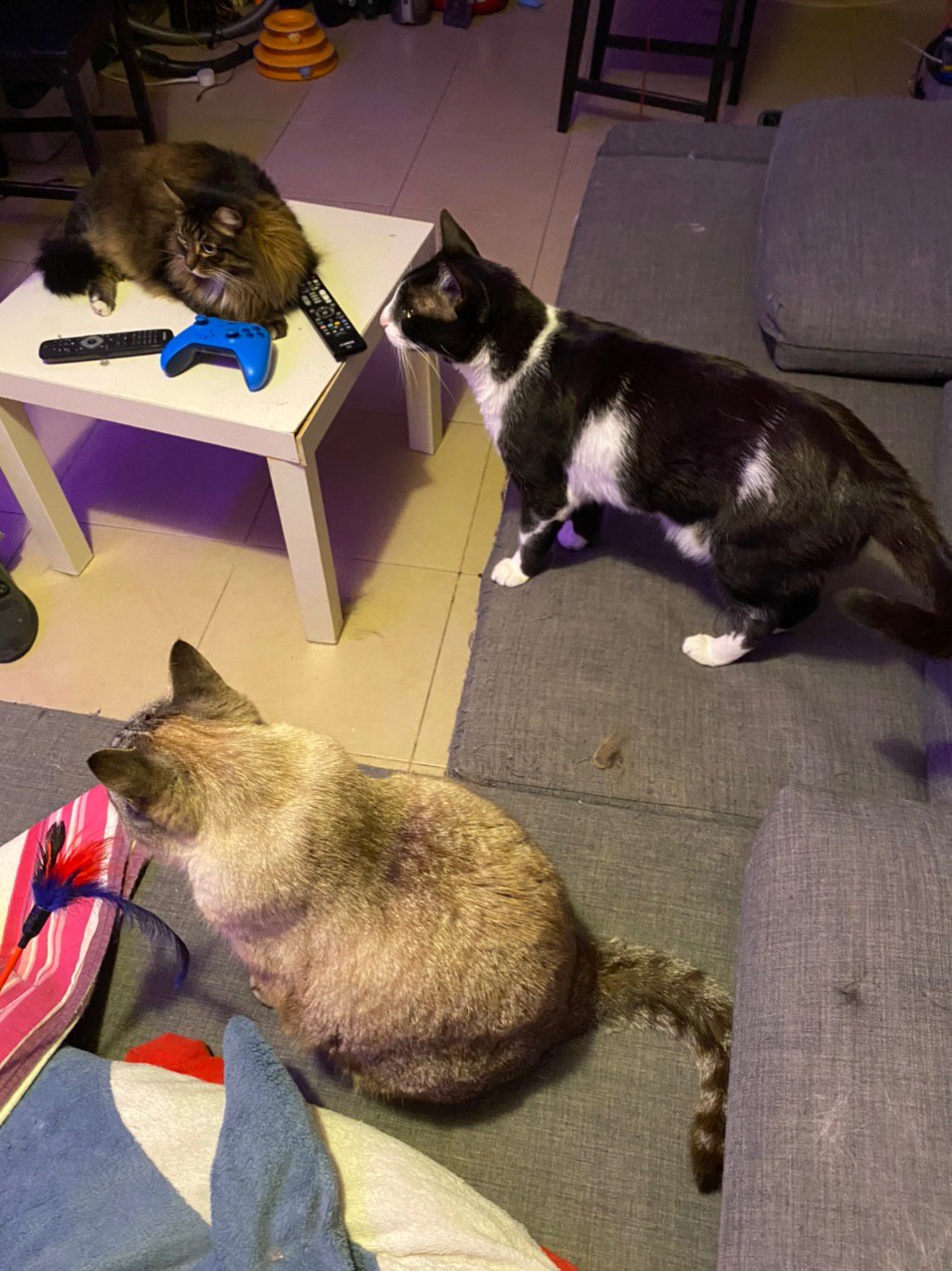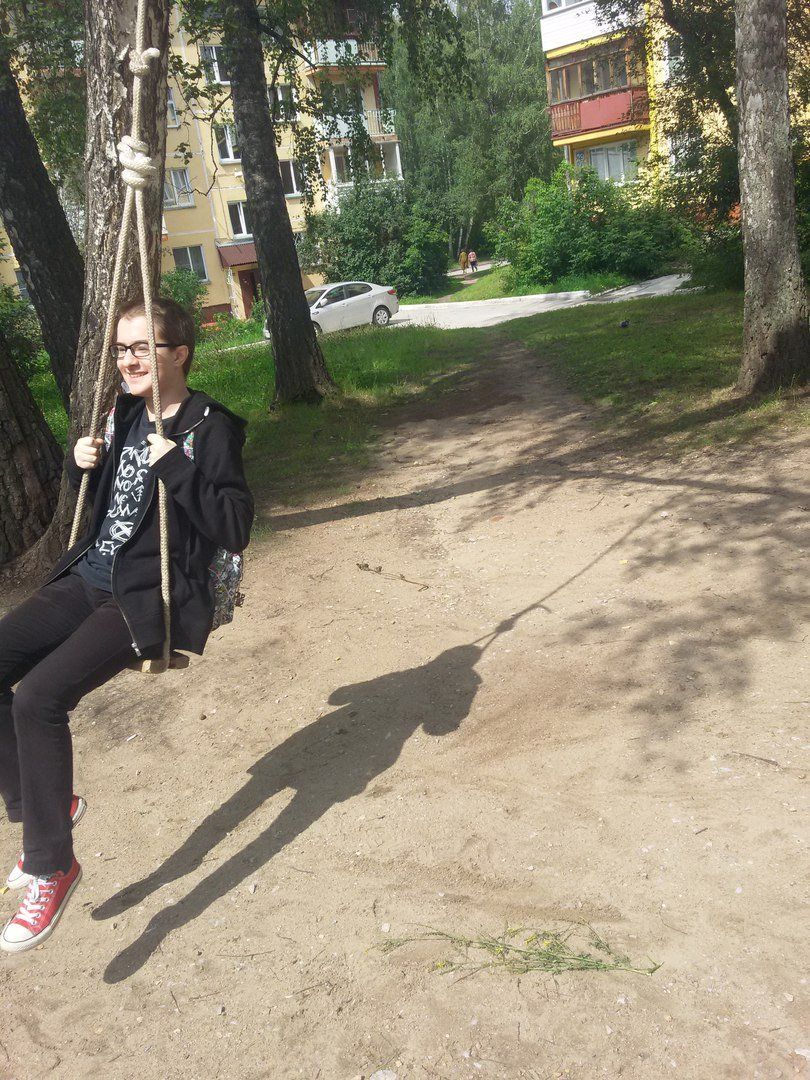
Size: a a a
2020 May 03

А во, чуваки, лайфхак:
Если набрать лишнего веса, то ето будет как будто носишь с собой рюкзак с грузом. То есть чем больше жира, тем лучше тренируются мышцы. Нажрал 30кг == целый день таскаешь 30 кг, тренировочка! Всем спорт, посоны.
Не благодарите.
Если набрать лишнего веса, то ето будет как будто носишь с собой рюкзак с грузом. То есть чем больше жира, тем лучше тренируются мышцы. Нажрал 30кг == целый день таскаешь 30 кг, тренировочка! Всем спорт, посоны.
Не благодарите.


Чтоб заебался

peer-to-peer во время чумы

(via @triteisalrite)
был вопрос о:
Four direct measurements of the fine-structure constant 13 billion years ago (src: advances.sciencemag.org; arxiv.org)
Abstract
Observations of the redshift z = 7.085 quasar J1120+0641 are used to search for variations of the fine structure constant, a, over the redshift range 5:5 to 7:1. Observations at z = 7:1 probe the physics of the universe at only 0.8 billion years old. These are the most distant direct measurements of a to date and the first measurements using a near-IR spectrograph. A new AI analysis method is employed. Four measurements from the x-shooter spectrograph on the Very Large Telescope (VLT) constrain changes in a relative to the terrestrial value (α₀). The weighted mean electromagnetic force in this location in the universe deviates from the terrestrial value by Δα/α = (αz − α₀)/α₀ = (−2:18 ± 7:27) × 10⁻⁵, consistent with no temporal change. Combining these measurements with existing data, we find a spatial variation is preferred over a no-variation model at the 3:9σ level.
0. результаты интересные, но пока есть вопросы к правомерности обобщений и надёжности методологии (можно напомнить о расхождении постоянной хаббла, при измерении разными методами)
1. сложно понять что именно подразумевается под дипольной моделью анизотропии, если анизотропия порождается деформацией, то дальше всё зависит от топологии замкнутости вселенной; если подразумевается сферическая замкнутость, то как они получили дипольную модель анизотропии (возможно подразумевается некое выделенное направление, где эффект наиболее значим, но всё равно это будет не диполь); тороидально замкнутая тоже не будет дипольной... и т.п.
хочется верить в новую физику в этой вселенной (в мультиверсе и так все есть)
обзоры: phys.org, sci-news.com, hightech.plus (<=пересказ с phys.org)
был вопрос о:
Four direct measurements of the fine-structure constant 13 billion years ago (src: advances.sciencemag.org; arxiv.org)
Abstract
Observations of the redshift z = 7.085 quasar J1120+0641 are used to search for variations of the fine structure constant, a, over the redshift range 5:5 to 7:1. Observations at z = 7:1 probe the physics of the universe at only 0.8 billion years old. These are the most distant direct measurements of a to date and the first measurements using a near-IR spectrograph. A new AI analysis method is employed. Four measurements from the x-shooter spectrograph on the Very Large Telescope (VLT) constrain changes in a relative to the terrestrial value (α₀). The weighted mean electromagnetic force in this location in the universe deviates from the terrestrial value by Δα/α = (αz − α₀)/α₀ = (−2:18 ± 7:27) × 10⁻⁵, consistent with no temporal change. Combining these measurements with existing data, we find a spatial variation is preferred over a no-variation model at the 3:9σ level.
0. результаты интересные, но пока есть вопросы к правомерности обобщений и надёжности методологии (можно напомнить о расхождении постоянной хаббла, при измерении разными методами)
1. сложно понять что именно подразумевается под дипольной моделью анизотропии, если анизотропия порождается деформацией, то дальше всё зависит от топологии замкнутости вселенной; если подразумевается сферическая замкнутость, то как они получили дипольную модель анизотропии (возможно подразумевается некое выделенное направление, где эффект наиболее значим, но всё равно это будет не диполь); тороидально замкнутая тоже не будет дипольной... и т.п.
хочется верить в новую физику в этой вселенной (в мультиверсе и так все есть)
обзоры: phys.org, sci-news.com, hightech.plus (<=пересказ с phys.org)


ето котики




Предложка











